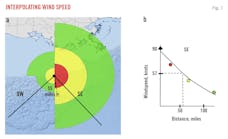A high price relative to coal and increasing use of renewable energy make future demand for natural gas especially uncertain in Europe, according to an analyst at the Oxford Institute of Energy Studies, London.
Gas demand in 35 European countries fell from 594 billion cu m in 2008 to an estimated 528 billion cu m in 2013 and "shows little sign of recovery," writes the analyst, Anouk Honore, senior research fellow, in a new study.
The main driver of gas-demand growth in the 2000s, power generation, has become the main driver of decline, she says, even as signs of economic recovery lift forecasts of electricity use.
Although some European governments are revising their support schemes for renewable energy, binding targets remain in place for 2020 and are proposed for 2030. Increasing use of renewable energy will lower the annual average load factor for thermal generation and force gas-fired generators to change.
"Reduced operating hours and an increasing number of plant start-ups and shut-downs in order to balance renewable energy supply is something new," Honore notes. "But power generators with gas-fired capacity will need to adapt to the new role of gas in power generation and create a new business model."
Growth of gas demand for power generation requires a price much more competitive with that of coal than exists now. Honore's analysis doesn't assume an end to the gas premium against coal in Europe before 2030. Such a change is possible after 2020, however, if carbon dioxide prices rise sufficiently in response to government programs and emissions trading.
As coal plants are retired, Honore says, the importance of the coal-gas price relationship will diminish after 2020 while gas generation "becomes more and more a factor of renewable (including hydropower) availability and the retirement/building of new nuclear plants."
About half of existing baseload generation capacity will face closure through 2030.
"Much will depend on how the gap between power demand and renewables is filled—and how big the gap is—but this is a possible sign of improvement for gas in the power generation sector, which could even start in the mid-2010s," the analyst writes.
In her scenarios, European gas consumption falls from 594 billion cu m in 2010 to 564 billion cu m in 2020 then rises to 618 billion cu m in 2030. She points out that much of the decline expected until 2020 already has occurred during 2010-13.
Honore expects annual gas use in power generation to grow by 30 billion cu m between 2015 and 2030. But it doesn't return to its 2010 level of 202 billion cu m, reaching only 186 billion cu m in 2030.
In other markets, annual gas demand for transportation has the potential to grow by 30 billion cu m between 2010 and 2030 in Europe if supported by governmental policies. But even with that much growth, the transport market would account for only 5.6% of total demand.
Honore projects "fairly flat" gas demand through 2030 in industrial and residential-commercial markets of Europe.
